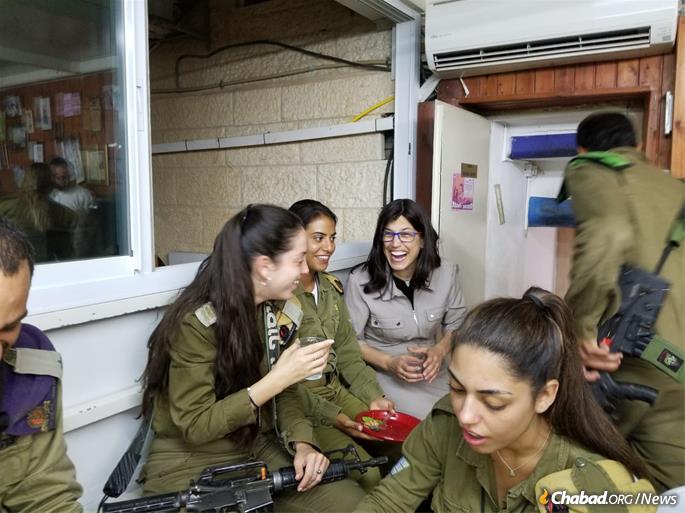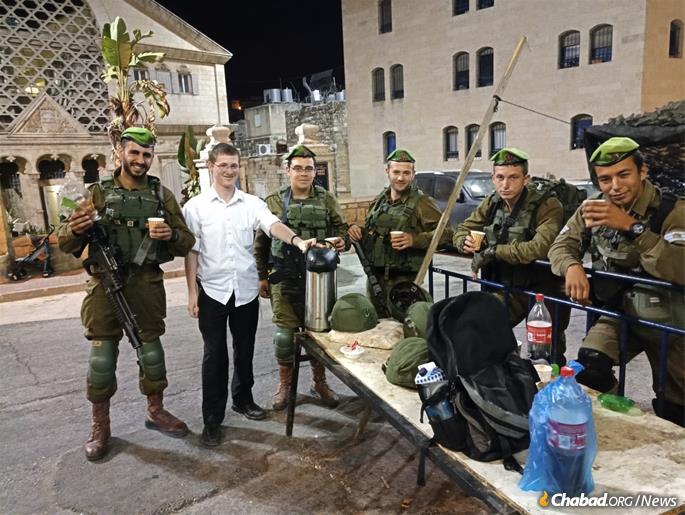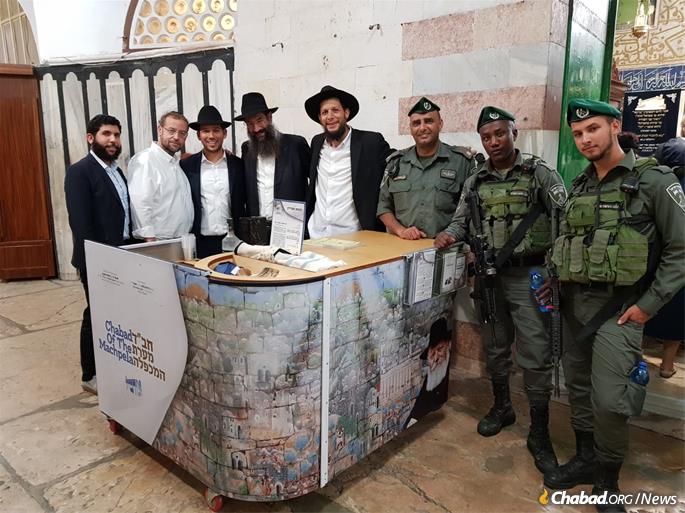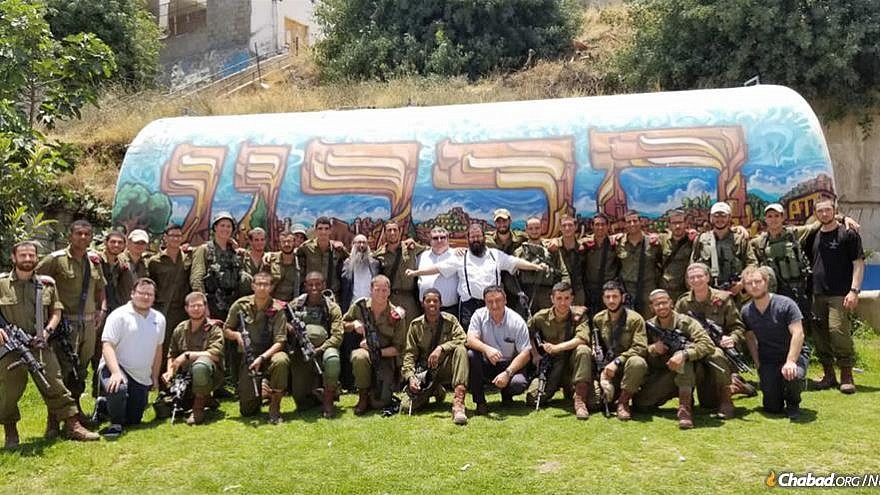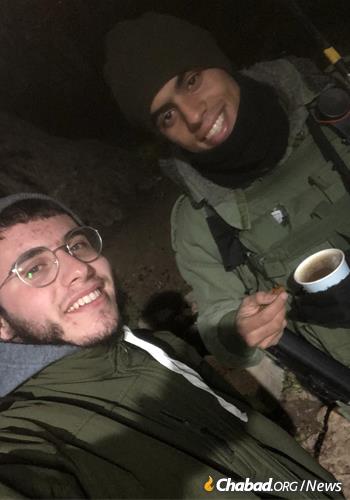
“It is really quite amazing what they do,” he said.
Supporters of those efforts are seeking to raise $613,000 in a 24-hour online drive beginning Wednesday, Dec. 19, at noon EST. To participate, visit their donate page here.
The Cohens, who arrived in 2002, also serve the local residents and the thousands of tourists who stream to Hebron each year from Israel and around the world, but it is the work with the ever-changing shifts of male and female soldiers that have earned them their widespread reputation.
Upwards of 500 troops reside there at any given time. Every four months, the rotation changes, so that over the years thousands upon thousands of soldiers have had their lives touched by the Cohens and their dedicated staff in different ways.
For Rabbi Cohen, who served in the Givati Brigade, and whose oldest son of six children is training to be an IDF paratrooper, helping soldiers materially and spiritually has additional meaning. In many cases, it is the first time that some of these stalwart young Israelis have had any exposure to Torah Judaism.
Among the offerings are Torah classes, and to some of the soldiers, this represents their first exposure to traditional learning.
Of the many yeshivah students in Hebron, there are always two boys who make the rounds of the bases, helping soldiers put on tefillin, while another of the emissaries on staff mans a permanent tefillin booth and coffee corner at the Cave of the Patriarchs.

Hebron Chabad history, though, goes much further back, he said.
“My wife and I are part of a storied history that began when the first Chabad community was established here almost 200 years ago.”
In 1844, the granddaughter of the first Lubavitcher Rebbe—Rabbi Schneur Zalman of Liadi—and daughter of Rabbi DovBer—the second Lubavitcher Rebbe, known as the Mittler Rebbe, Rebbetzin Menucha Rochel Slonim—left Russia together with her husband, Rabbi Yaakov Kuli Slonim, to fulfill her dream of living in Hebron. As matriarch of the Chabad community, she would receive guests in her home, which became known as Beit Schneerson (the Schneerson House). Known for her piety and wisdom by Jews and Arabs alike, she gained a reputation as a sought-after spiritual counselor and provider of blessing to many. She died in her ninetieth year in 1888 and is buried in the old Hebron cemetery, where a kollel in her name has been established since.
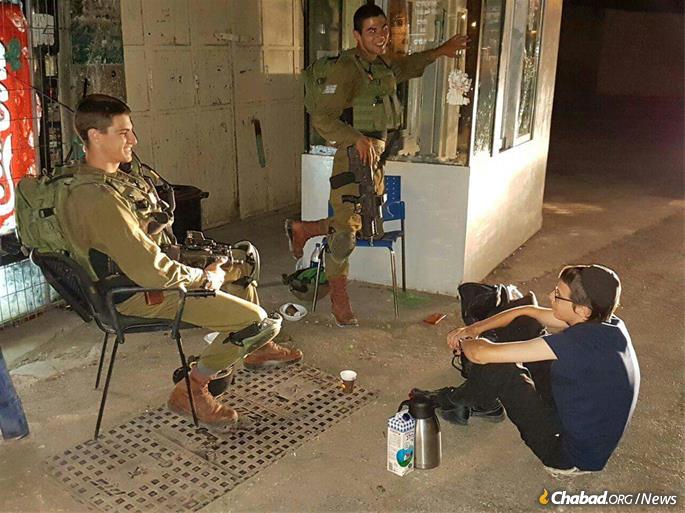
In 1878, a wealthy Turkish Jew by the name of Chaim Yisrael (Mercado) Romano built a palatial home and guesthouse that was eventually known as Beit Romano. In 1901, the renowned Sephardic sage, Rabbi Chaim Cheskia Medini—the Sdei Chemed—arrived to live there and then established a yeshivah. Learning that the Romano family was interested in selling the property, the Sdei Chemed offered it to the Fifth Lubavitcher Rebbe, Rabbi Shalom DovBer Schneersohn—the Rebbe Rashab—where he established the Yeshiva Torat Emet.
Fast forward to further notable activity and ongoing community building in the most recent of times. For the last three years the Cohens have erected, with the help of an anonymous donor, the massive Chayei Sarah Tent to accommodate in style the thousands of visitors who converge on the city annually on the Torah portion of that name to eat and celebrate. The portion contains the famed story of Abraham buying from the then locals the burial plot for his deceased wife, Sarah, that would also become the tombs for all of the Jewish patriarchs, including Abraham, and the matriarchs except for Rachel who is buried near Bethlehem.
“A beautiful welcome center is also planned for the area outside of the cave,” said Cohen, adding that the beautification of Hebron “to give it the honor it deserves,” in addition to bolstering its spiritual life, has always been part of he and his wife’s mission as encouraged by the Rebbeim (rabbis) of Chabad down through the years. “That will be the next campaign.”
But in the final accounting of all past, future and current activity, Cohen says he looks most forward to the time when the Jewish redeemer will come and take the Jewish people out of exile. “We know that one of his first stops is to awaken the sleeping fathers and mothers [buried in Hebron],” he said. “We hope he will come very soon to wake them up and together with the rest of the Jewish world dance to Jerusalem.”
